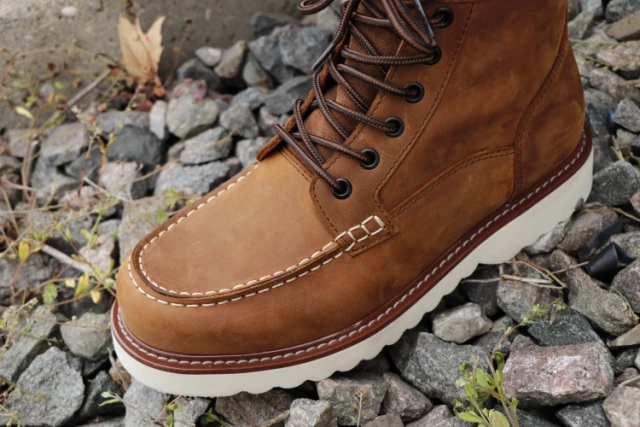For workers in labor-intensive industries, foot health isn't just about comfort—it's a critical factor in long-term mobility and job performance. Traditional work boots often prioritize safety features like steel toes while neglecting anatomical design, leading to preventable conditions like bunions, hammertoes, and plantar fasciitis. This article explores why ergonomic toe space is equally vital as impact resistance, backed by occupational health research and ASTM/OSHA compliance insights.
The Science of Foot Health in Labor-Intensive Jobs
How Cramped Toes Lead to Chronic Conditions
Research shows that 72% of industrial workers experience foot pain directly linked to ill-fitting footwear. When toes are compressed:
- Nerve compression causes Morton's neuroma (thickened nerve tissue)
- Tendon misalignment triggers hammertoe deformities
- Reduced circulation accelerates fatigue during long shifts
A 2023 ergonomics study found workers wearing wide-toe-box boots reported 40% fewer musculoskeletal complaints after six months compared to standard safety boots.
Ergonomic Design vs. Traditional Work Boots
Modern protective footwear combines safety and biomechanics through:
- Anatomical toe space: Mimics barefoot toe splay during weight-bearing
- Flexible metatarsal guards: Protects without restricting natural foot flexion
- Gradual arch support: Reduces strain from prolonged standing
"The best safety feature is one workers will actually wear," notes occupational therapist Dr. Elena Torres. "Boots that cause pain defeat their own purpose."
Choosing the Right Fit for Hazard-Prone Environments
Case Studies: Industry-Specific Benefits
| Industry | Wide-Toe-Box Advantages | ASTM Standards Met |
|---|---|---|
| Construction | Prevents slips during roof work (better toe grip) | I/75, C/75, PR |
| Manufacturing | Reduces lateral strain from repetitive motions | EH, SD |
| Healthcare | Minimizes edema (swelling) during 12-hour shifts | M/F, WR |
Key Selection Criteria
When evaluating boots:
- Toe box height: Should allow 1.5 cm of vertical wiggle room
- Safety certifications: Look for ASTM F2413 labels matching your hazards
- Break-in period: Quality boots adapt within 20-30 work hours
Pro tip: Trace your foot on paper while standing, then compare to the boot's insole. Proper fit means no part of your outline touches the toe box edges.
Ready to upgrade your safety footwear lineup? 3515 partners with distributors and brands to deliver OSHA-compliant work boots engineered for real-world ergonomics—because protected feet shouldn’t come at the cost of comfort. [Contact our team] to discuss custom solutions for your clients' workforce needs.
Next time you lace up, consider this: The space around your toes might be the difference between finishing a shift strong or nursing avoidable injuries.
Products You Might Be Looking For:
Explore ergonomic wide toe box work boots
Related Products
- Wholesale Customizable Suede Safety Boots - Puncture-Proof with Velcro Closure
- Wholesale Durable Mid-Cut Tactical Boots for Custom & Private Label Brands
- Durable Mid-Cut Tactical Boots for Wholesale & Private Label
- Durable Leather Work Boots Wholesale Manufacturer & Custom Factory
- Wholesale Durable 6-Inch Work Boots | Custom & Private Label Manufacturer
Related Articles
- How to Choose Work Boot Materials for Maximum Safety and Durability
- Work Boots vs. Western Boots: How to Choose the Right Footwear for Labor Safety
- How to Choose Work Boots That Match Your Industry's Safety Needs
- How to Choose Work Boots That Balance Safety, Comfort, and Durability for Your Job
- How Safety Work Boots Engineer Protection: Features and Standards for Targeted Hazard Mitigation




















